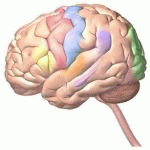Neurology
|
3 july 2015 01:46:07 |
| Is there association between hyperdense middle cerebral artery sign on CT scan and time from stroke onset within the first 24-hours? (BMC Neurology) |
|
Tweet Background:
The hyperdense artery sign (HAS) on CT brain scan is an assumed radiological marker of acute intra-arterial thrombotic occlusion. However, the relationship between HAS between time of stroke onset has not been adequately investigated, leading to uncertainty regarding its validity as a marker of acute ischaemia. We attempted to determine if the presence of the hyperdense artery sign is associated with time from stroke onset.
Methods:
Retrospective cross-sectional study conducted in a tertiary referral centre. Consecutive patients with acute ischaemic stroke and confirmed middle cerebral arterial occlusion on initial CT angiogram from 2007–2011 were included. Visual estimation and manual measurement of Hounsfield units of affected and corresponding non-affected artery on non-contrast CT was completed and mean density was calculated from four separate readings. Primary outome measures were Time from stroke onset and HAS on both visual estimation and the ratio of mean value in Hounsfield Units (HU) of affected to non-affected artery.
Results:
One hundred and fifty-four subjects with confirmed arterial occlusion on CT Angiogram were included in the study. There were no significant differences in age distribution or vascular risk factor presence between subjects with or without HAS. Subjects with HAS were less likely to be male (50.9 % vs 70.8 %, p = 0.02).) HAS was found in 106 (68.8 %) of all subjects. Median NIHSS score at presentation was significantly higher in the HAS group (17 vs 12, p = 0.02). No statistically significant association between HAS and stroke onset time or density ratio between affected and non-affected artery was detected overall within either the first 24-h or on subgroup analysis of those in the first 4.5-h. A small subgroup of three patients with stroke onset greater than 24-h all had absent HAS.
Conclusions:
No evidence of a correlation between time of stroke onset and presence of a HAS within the first 24-h post acute ischaemic stroke was identified. The HAS was associated with a higher NIHSS score at presentation. |
| 182 viewsCategory: Neurology |
 Impact of voluntary exercise and housing conditions on hippocampal glucocorticoid receptor, miR-124 and anxiety (Molecular Brain) Impact of voluntary exercise and housing conditions on hippocampal glucocorticoid receptor, miR-124 and anxiety (Molecular Brain)Neuroimmunology: Uncovering the secrets of the `brain drain`--the CNS lymphatic system is finally revealed (Nature Clinical Practice Neurology) 
|
| blog comments powered by Disqus |
MyJournals.org
The latest issues of all your favorite science journals on one page
The latest issues of all your favorite science journals on one page



